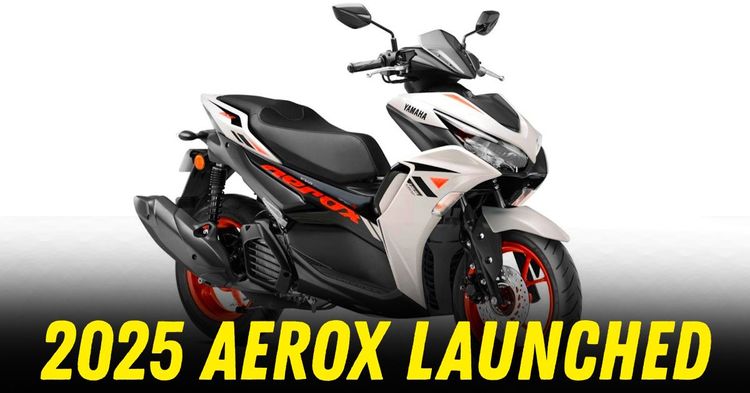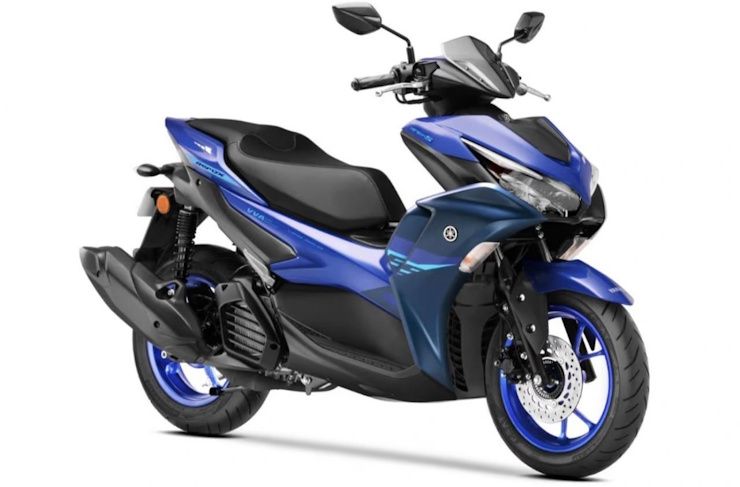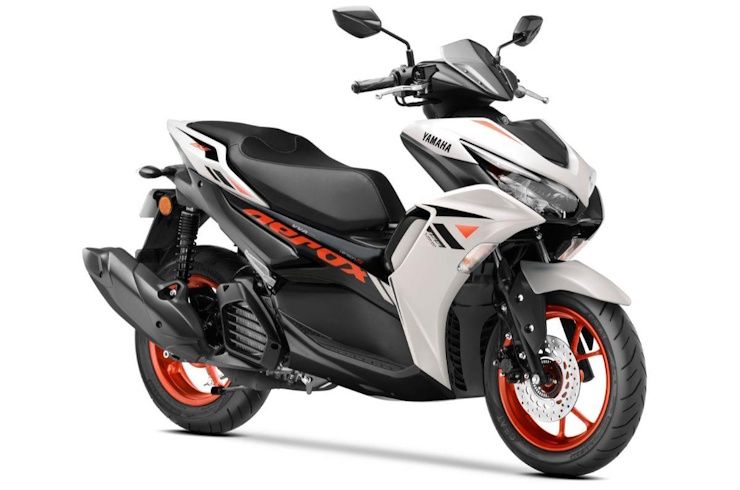2025 Yamaha Aerox 155 Launched: What’s New?


Yamaha’s Aerox 155, the sporty maxi-scooter that carved a niche for itself in India’s two-wheeler market, has returned for 2025 with updates that blend style upgrades with regulatory compliance. While it doesn’t reinvent the wheel, the latest iteration sharpens its appeal for urban thrill-seekers who crave a mix of performance and practicality. Let’s unpack what’s changed, what stays the same, and where it stands in today’s competitive landscape.

Visually, the Aerox 155 gets a subtle but effective makeover. The top-tier Version S now flaunts an eye-catching Ice Fluo Vermillion shade, swapping last year’s Grey Vermillion for a brighter, bolder look. This new palette pairs glossy white body panels with fluorescent orange wheels and decals, giving it a dynamic, race-ready vibe. The beloved Racing Blue variant remains but sports revised graphics that accentuate its aggressive lines. For those who prefer subtlety, the base model retains its understated Metallic Black finish. These changes may seem minor, but they inject freshness into a design that’s already distinct in a sea of conventional scooters.
Mechanically, the 155cc liquid-cooled engine-a standout feature in this segment-remains untouched on paper, delivering 14.75 bhp and 13.9 Nm of torque. However, Yamaha has recalibrated the motor to meet India’s stricter OBD-2B emission norms, part of a broader push toward cleaner vehicles. While power figures stay identical, riders might notice smoother throttle response or marginally improved fuel efficiency, though real-world testing will confirm this.

The CVT automatic transmission and VVA (Variable Valve Actuation) system carry forward, ensuring the scooter’s signature zippy acceleration. Owners often note the engine’s ability to hold steady at highway speeds of 90–100 km/h, a rarity in scooters prioritising urban commutes. That said, the Aerox’s focus on performance means it sacrifices some frugality-it delivers around 40 km/l under mixed riding conditions, lagging behind utilitarian rivals.
The Version S continues to lead with premium add-ons like a Smart Key system for keyless ignition and remote locking. Both variants retain the Bluetooth-enabled digital console, syncing with Yamaha’s Y-Connect app to provide turn-by-turn navigation alerts, call/SMS notifications, and maintenance reminders. Full LED lighting (headlamp, taillamp, and position lights) and a side-stand engine cut-off add modern flair and safety.
Yet, the Aerox 155 still omits features that rivals offer. There’s no USB charging port, and the sculpted floorboard-a byproduct of its motorcycle-inspired frame-limits legroom and practicality. The under-seat storage, while spacious enough for a full-face helmet, is split by a central spine, a design quirk that divides opinions. For a scooter positioned as a premium offering, these omissions feel noticeable, especially as competitors prioritise everyday convenience.
The Aerox 155 is available in two trims: the Standard variant at ₹1,50,130 and the Version S at ₹1,53,430 (ex-showroom). While prices have crept up marginally over the past year, Yamaha has held the line with this update. The scooter’s cost places it in a premium bracket, competing less with mass-market options like the TVS NTorq and more with niche offerings like the Hero Xoom 160.
Critics argue that the Hero Xoom undercuts the Aerox on price while matching its features. However, Yamaha loyalists counter that the Aerox’s refined engine, sporty handling, and global design pedigree justify the premium. It’s a debate that hinges on priorities: raw performance versus value-for-money practicality.
The Aerox 155’s 14-inch wheels and telescopic front suspension provide confidence-inspiring stability at higher speeds, a trait uncommon in smaller-wheeled scooters. However, the rear mono-shock remains stiff, a design choice that prioritises cornering agility over comfort. On smooth roads, this setup feels crisp and responsive, but potholes or uneven surfaces send jolts through the rider-a compromise that polarises owners.
Braking performance, with discs at both ends and single-channel ABS, is reliable though not class-leading. The scooter’s lightweight 126 kg frame aids flickability in traffic, but the stepped seat, while sporty-looking, can feel cramped on longer rides. Enthusiasts often tweak tyre pressures or opt for aftermarket suspension upgrades to soften the ride, but these are fixes Yamaha itself could address in future iterations.
In a market flooded with commuter-focused scooters, the Aerox 155 carves its identity as India’s only performance-oriented maxi-scooter. Its motorcycle-derived engine, sharp styling, and highway-friendly DNA cater to a specific audience: riders who want the convenience of a scooter without sacrificing the thrill of acceleration. While models like the Aprilia SR 160 have faded, Yamaha’s steady updates-like this year’s colour refresh-keep the Aerox relevant.
Yamaha’s 2025 update feels more evolutionary than revolutionary, reflecting a strategy of incremental refinement. The new colours and emission tweaks ensure compliance and visual appeal, while the core package-peppy engine, agile handling, and tech features-remains compelling. Yes, the ride is firm, storage is quirky, and rivals offer better value. But for those seeking a scooter that doubles as a style statement and a weekend escape machine, the Aerox 155 still delivers a unique proposition.